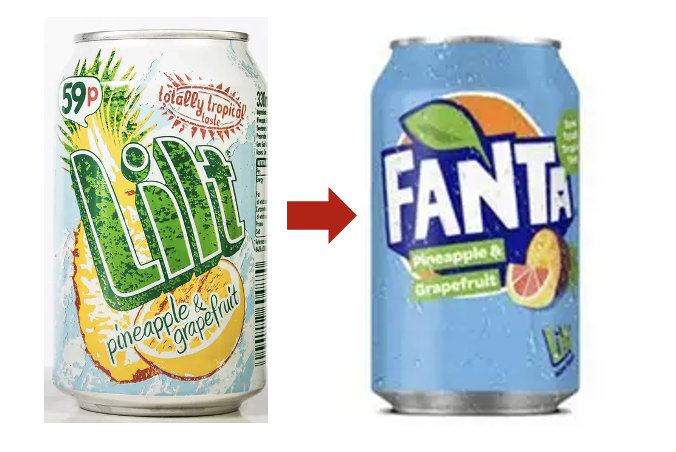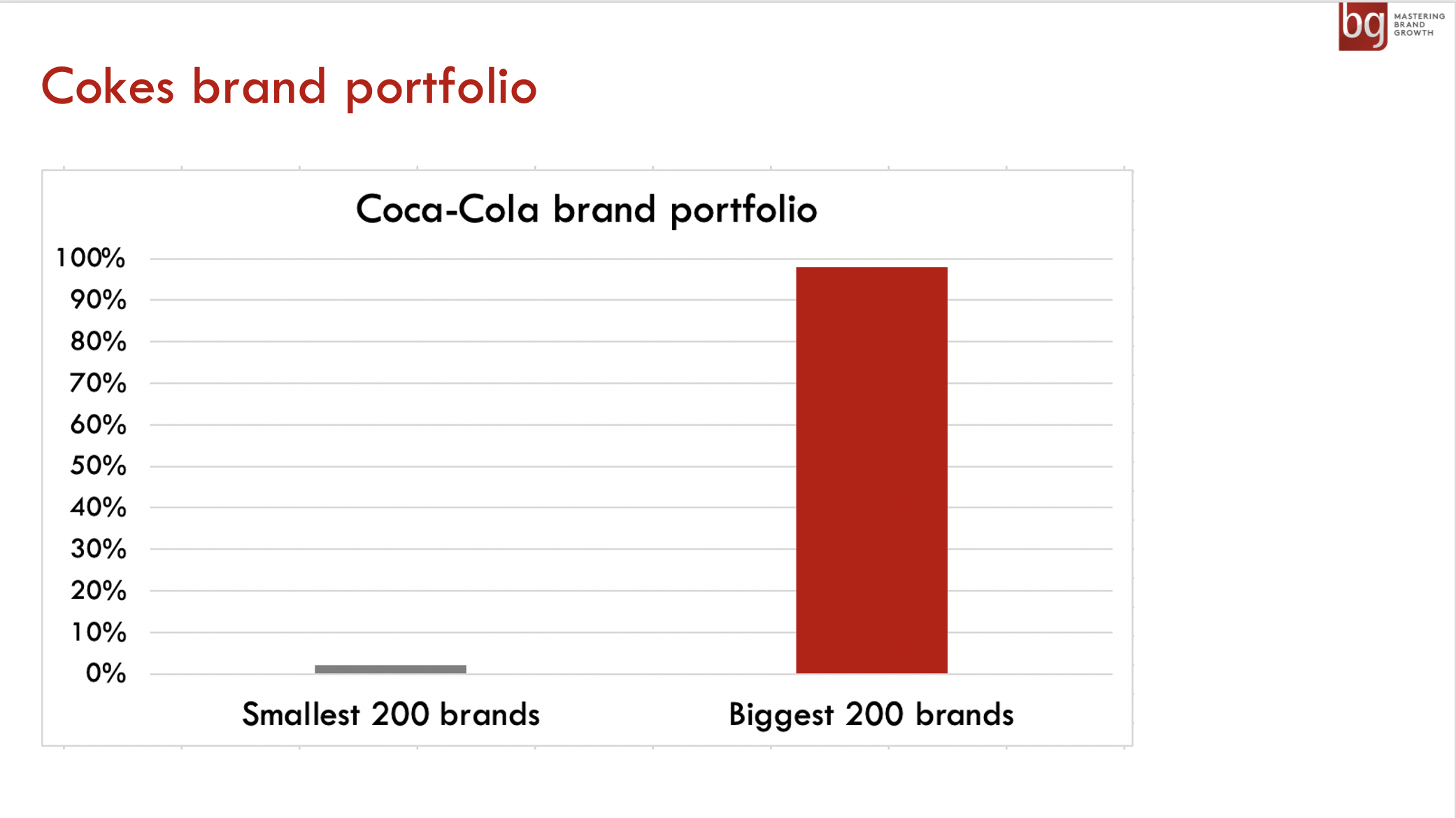KILLING LILT: COCA-COLA BRAND FOCUS IN ACTION
This week saw news that Coca-Cola was killing off the Lilt brand of soft drink. The Lilt product is being re-launched as Fanta Pineapple & Grapefruit. This could be seen as a bold move, given that Lilt has 50 years of history in the UK. In reality, the change is part of a well thought out portfolio strategy I first posted on back in December 2020, with an update a year later here.
In this post we look at learning on portfolio strategy from the Lilt brand migration. I’ll use the practical brand portfolio approach from the upcoming Mastering Brand Growth program, where we will explore the Coca-Cola strategy in more detail.

1. HOW MANY BRANDS DO YOU NEED?
The first question we ask is how many brands you NEED.
Growth opportunities
What are the key needs, occasions and consumer groups you are targeting? This work could take the form of a market map or a series of ‘demand spaces’. This involves looking at all the different segmentation variables: What, Who, When, Where, Why?
Brand assets
The next step is to analyse your brand assets objectively. In our brandgym approach, we call this “following the money”. When Coca-Cola followed the money, they found that HALF the company’s 400 brands were small, local country brands accounting for only 2% of the company’s sales.
The ‘long tail’ of 200 small brands are the ones in Quincy’s firing line. And Lilt clearly falls into this category. The brand did have some residual equity, especially the slogan, “The Totally Tropical Taste”, which was used in advertising campaigns during the 1970s and 80s. However, 2022 sales of £16m are dwarfed by those of the global Fanta brand, which is 17 times bigger at £281m according to Nielsen (1).

Overlap and underlap
Having assessed your brand assets, you can then map these against the growth opportunities. You may highlight underlap where no brand is present. Or, as was probably the case with Lilt, you may find overlap. Here, multiple brands are targeting the same occasion or need state. Both Lilt and Fanta are likely to be targeting “fun, fruity refreshment”.
2. HOW MANY BRANDS CAN YOU FEED?
The second big question is then a reality check on how many brands you can feed with marketing support. What are the available funds for marketing? And what is the company’s appetite to increase these levels of spend?
The results of this analysis can then be weighed up against the number of brands the team think they need and the ideal support level for each.
3. BRAND PORTFOLIO ACTION PLAN
‘Brand migration’, like the transition of Lilt to Fanta, is one the action plans that can result from a portfolio strategy project. Other possible actions include brand acquisition or brand disposal, as we explored in this earlier post on Danone.
A key thing to note is that the real challenge with migration is not to migrate the brand, but to migrate the brand’s users. Lilt fans have expressed their dismay at the disappearance of the brand. “F*** this to hell. I love a Lilt. Gonna have to stockpile,” wrote one long-time fan in an Independent report (1). Podcast producer Carl Reigler added: “I don’t think I want to live in a world without Lilt in it. What’s the point anymore.”
The objective of the Lilt brand migration should, therefore, be to maximise the chances of current users moving to Fanta Pineapple & Grapefruit. Despite the emotions of some fans expressed above, the key is to make the transition easy to follow using ‘system 1’ thinking, including at the point of sale.
Analysis shows Coca-Cola have followed a 2-step process used on other brand migration moves, such as changing Marathon to Snickers. “Keen Lilt fans may have spotted a gradual transition as the drink has made its way into the Fanta family over the past few months, with changes to its packaging and logo,” explained a Coca-Cola spokesperson in the Independent report (1). This transition has cleverly got shoppers used to a new set of visual devices for Lilt, including the typeface, the green leaf and the fruit pictures. The upcoming change to Fanta is also cued with a flash: “By Fanta” (see below). When the change to Fanta finally happened, the ideal outcome was that people kept on buying the product using quick, intuitive system 1 thinking without even noticing the new name.

In conclusion, the migration of Lilt to the Fanta brand is a good example of brand portfolio focus in action, based on an analysis of growth opportunities and brand assets, all under-pinned by an approach to follow the money.
We explore brand portfolio strategy alongside seven other modules on the brandgym Mastering Brand Growth program, which kicks off in April. If you’re on the blog website and would like more info on the program, simply pop your name and email in the form below (sorry, form will not show properly in the Monday morning email)
SOURCES


